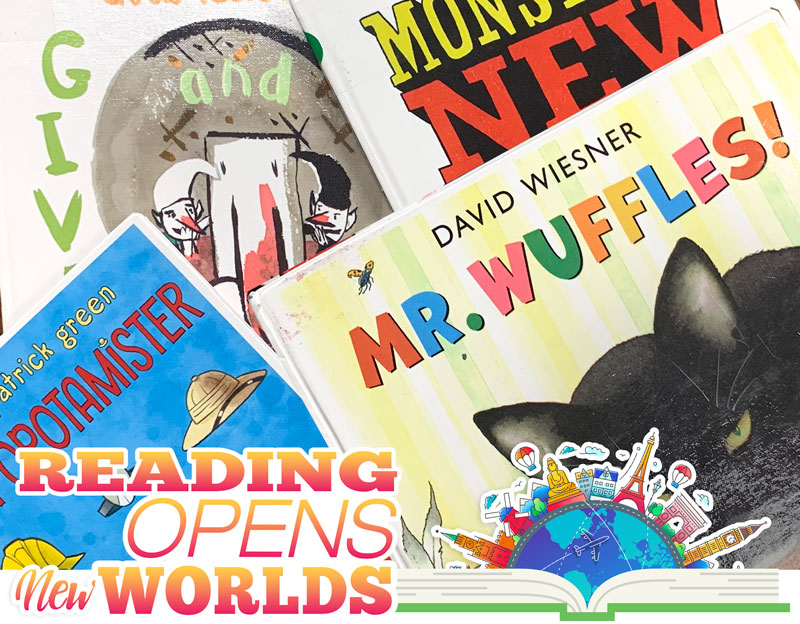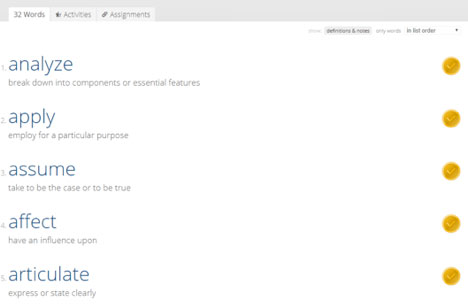
By Dr. Randy Willison, GCCISD ELA Coordinator
Teaching reading to elementary children is a complicated art. When children enter our schools, they come to us with a wide variety of backgrounds. Some have already mastered early reading skills and can recite the alphabet with ease. Others have little to no knowledge of early language concepts. Family dynamics, socioeconomics, health, nutrition, sleeping habits and a host of other factors can affect how children learn, and as children are learning to read, this can present challenges. Our teachers are expected to manage all these variables and work to get very diverse groups of children to the appropriate reading comprehension level.
Among the many challenges our teachers face is the lack of reading practice at home, which is essential to supplementing what it learned in the classroom. Think back to when your own children were learning to read. Do you recall practicing sight words, or listening to them struggle (and then overcome) learning words like “the” and “that”? Far too many of our children today don’t even have a book to practice with at home. Let that sink in: Can you imagine not owning a book? This is not unique to us. According to the American Academy of Pediatrics, more than 1 in 3 children in the country begin kindergarten lacking the skills they need to learn to read.
A lack of at-level reading affects every aspect of a child’s education. In first grade, for instance, students start to learn word problems in math class. A student who might have a natural aptitude for math will undoubtedly become frustrated with this particular math concept, causing him or her to fall behind in that subject area as well.
Regardless of the subject, strong reading skills can help a student succeed in school. Successful students lead to a stronger, healthier community. Would you consider spending an hour a week helping a student improve his or her reading skills? You don’t have to be an educator; in fact, there are few requirements other than a desire to help children, a bit of patience as they struggle with certain words, and a sense of pride when you watch their absolute joy when they understand what they are reading. (Trust me, there will be smiles when they suddenly feel good about this accomplishment.)
If you’re not already an approved volunteer in our district, visit our website at gccisd.net and click on “Volunteer Online” in the righthand Navigation bar to complete a background check. (We welcome reading volunteers, but the safety of our students always comes first, so this is a required step.) Call the elementary school closest to you and ask them to select a child who could use some time to improve his or her reading skills. That child will be delighted to see and work with you.
Editor’s Note: Saturday, March 2, 2019 is National Read Across America Day, which is held each year on Dr. Seuss’s birthday.
By Waneta Hebert, Gentry Junior School, ELA Teacher
Imagine seeing students excited to learn new words…
Anyone who has ever had to study vocabulary terms knows that it is not the most engaging activity. However, it is quite often essential. Most of our learning is made up of vocabulary terms. It’s hard to understand concepts in science if you don’t know the meaning of the words cell, molecule, atom, etc. It’s difficult to answer STAAR questions if you’ve never seen words like emphasize, summarize, analyze, infer. It would be nearly impossible to understand the intricacies of government in social studies without knowledge of amendment, judicial, electoral.
 Waneta Hebert, Gentry Junior School, ELA Teacher
Waneta Hebert, Gentry Junior School, ELA TeacherAs an English teacher, I know that my students will perform better on the state mandated tests and will be better able to function in the world if they have a wider vocabulary. A recent study from A&M showed that the reading level of many STAAR reading passages can be years above the grade level tested. An improved vocabulary not only saves students time spent looking up words in a dictionary, it also helps them gain a much deeper understanding of what they read.
My students and colleagues know that I am a lover of educational technology. I believe that it enhances learning in a way that paper and pencil is not always able to accomplish. As the world around the students becomes more digital, their school should follow suit. As a result, I am always looking for tools that can be easily and functionally incorporated into the classroom. I was over the moon when I first discovered vocabulary.com.
Vocabulary.com has been an amazing way to increase student engagement with vocabulary. Students answer questions about vocabulary terms and earn points for correct answers. If they get enough correct answers about a single word, they “master” the word, earning them a gold checkmark and bonus points. By gamifying the acquisition and mastery of new words, vocabulary.com makes students eager to participate and thus increases their active engagement with the skill.
 Figure 1: an example of a vocab.com list with gold mastery checkmarks
Figure 1: an example of a vocab.com list with gold mastery checkmarks
With my teacher account, I can assign my students specific lists that correspond with what we’re learning in class. Sometimes this means the difficult words from a story we’re reading. Sometimes they’re terms that are likely to appear on the STAAR test. Sometimes they’re content-specific terms like simile, plot, persuade, and character that align with classroom instruction.
I’ve used a variety of techniques and strategies to teach vocabulary in the past, but I’ve never seen a tool that caused my students to take such ownership of their learning in the same way that vocabulary.com does. There’s something to appeal to every student.
The points and levels system motivate some students, while achieving mastery appeals to others. The leaderboard on my teacher dashboard allows me to hold competitions in a single class, across multiple classes, or even, as more teachers begin to use it, across the entire school. I make a point to master any list that I assign to students, and I work to keep my own point total up. I have one student who has surpassed me on points and many others who are close. The “prize” of passing the teacher on a vocabulary game is more than enough to motivate many students.
 Figure 2: the teacher dashboard showing the leaderboard of points.
Figure 2: the teacher dashboard showing the leaderboard of points.
Vocabulary.com list with gold mastery checkmark scan be even more engaging in the classroom with the addition of “vocab jams.” A jam is a live in-class game where students are placed randomly on teams and answer questions to earn points for their team. Students love competing in jams and view it as a reward, even though they are learning in the process. They spur each other on to get the correct answers and love competing with the other groups.
I’ve also seen students take the initiative to create and share their own lists of words. They’ve practiced and mastered their own words. A group of my language learner students even figured out one morning how to create their own jam without me initiating it on the projector. They sat in a group and completed against each other, learning and discussing their new vocabulary terms.
Vocabulary.com truly is a truly worthwhile tool. It can take up as little or as much class time as is necessary. Students can even use it at home and share it with family and friends. Once the students buy into it and form a connection with the fun of acquiring and mastering new words, the potential benefits are endless.

By Brandy Onken, Lead Counselor at Ross S. Sterling High School
 Brandy Onken, Lead Counselor
Brandy Onken, Lead Counselor
Here it is: The last semester of senior year. Like it or not, the next few months will fly by at lightning speed. On June 1st, you’ll be seated in the audience surrounded by families of other graduates, beaming proudly and, at the same time, wondering exactly where time has gone. Now’s the time when you start to prepare your student (and yourself) for their next step, whether it be the workforce, the military or college. Big changes are afoot.
Here are a few tips to get ready AND maintain your sanity:
Keep Up with Your Senior
There will be a lot of activity this semester, including finalizing college plans and scholarship applications. Be mindful of deadlines and, if it helps, encourage your student to create a spreadsheet to track scholarships they’ve applied for and when recipients will be announced and awarded. Letters of recommendation from teachers are a crucial part of the scholarship process. Teachers will be asked to write a ton of recommendation letters, so remind your student to be prepared and ask teachers early. Don’t wait until the day before a scholarship application is due to ask for your recommendation; give your teacher a Letter of Recommendation form or resume stating your strengths, as well as, your honors, achievements and GPA. Teachers want to help their senior students out, but they are asked for a ton of recommendation letters, so please don’t wait until the day before a scholarship application is due to ask for one.
Make Some Decisions
The fall semester was the time to submit college applications, FAFSA, and focus on college readiness tests or retests (ACT/SAT). Most major universities had application deadlines in the fall; however, it’s not too late to apply to smaller four-year colleges and 2-year colleges. Perhaps your student isn’t quite sure where they plan to go to school next fall -- it’s time to start narrowing down options and making final decisions. Sit down with your student and come up with a plan-discuss the different options and what will work best for your student.
Be Prepared for Senioritis
At some point this semester, your student may very well come down with a horrible case of Senioritis (yes, this is real). No matter how hard we try to prevent it, this malady strikes with a vengeance. Help us out here: There’s still a lot to do! Join us in encouraging your senior to finish strong. Seniors who do just the bare minimum to get by are adopting bad habits that won’t work for them next year and may prevent them from receiving accolades this year.
Get Your Finances in Order
There’s no real way around it: Your senior year is an expensive one and college applications and expenses add up too. If you haven’t filled out your FAFSA application (financial aid), get started now. Every student planning to attend college, regardless of their parent’s income, must fill out an application for financial aid. Students who do not fill out a FAFSA application will not be eligible for federal aid or for scholarships through their college or university. This application will be completed and updated every year your student is in college. The application opened in October, so complete it as soon as possible, because there are deadlines.
It’s not just college your planning for during the senior year, you must also remember that you’re going to be hit up for prom tickets, prom clothing, senior pictures and more. Plan and budget accordingly to make the most of the time your student has left in high school. Memories are important, and pictures are worth a thousand words, schedule your senior pictures early so you can share them with friends, relatives, and teachers. Good photographers will fill their calendars quickly, so make plans now. If you’re planning an outdoor shoot, consider the weather and the time of year-start planning now.
Take Care of Yourself, Too
During the frantic pace of the next few months, you might find yourself a little more emotional. This is understandable and expected considering the changes ahead of you. You’re likely to experience fear, pride, uncertainty, excitement, dread, sadness, happiness, and confusion at the same time. Your student is feeling the same, so be patient, listen to them and help them transition into this new phase of their life. Embrace it and be excited about the new things to come. Do your best to enjoy the last few months of your child’s public-school career. Celebrate their successes, big and small. Graduation from high school is an accomplishment-so be excited! It’s also a time to remember all the times you encouraged them, sat on bleachers in frigid or broiling temperatures, nagged them about their grades, contributed to a class party, and helped them get to where they are today. On June 1st as you sit in the stands and reflect, be proud–your student made it to become part of the graduating class of 2019!